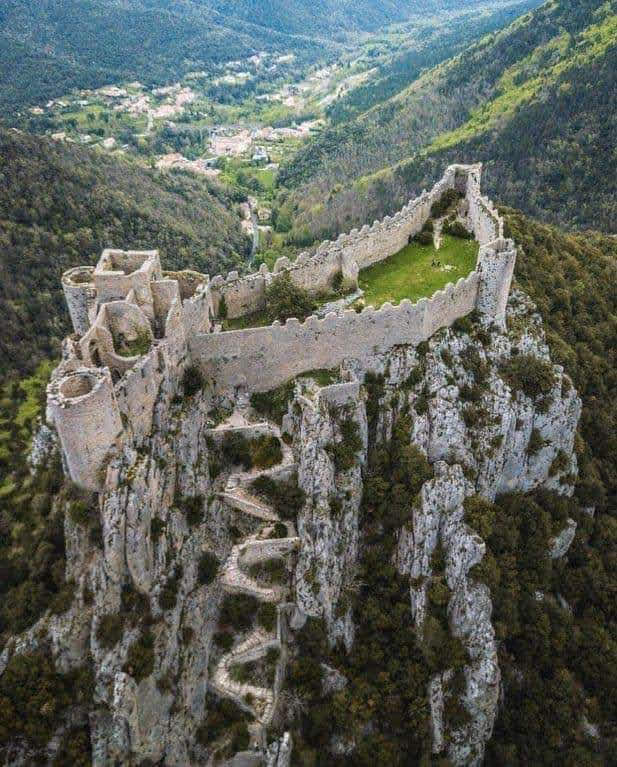The Château de Puilaurens, or The Castle of the Puilaurens, is the oldest fortified Cather Castle, which is now located in ruins and stands in the French town of Puilaurens in the department of Aude, in the Occitanie region. The castle’s ruins are the subject of a classification as historical monuments by decree of August 12, 1902.
The Puilaurens castle is perched on a rocky outcrop overlooking the Boulzane valley at an altitude of 697 meters and 1 kilometre southwest of the market town of Lapradelle, in the French department of Aude. He locked the gates of Fenouillèdes and was one of the five sons of the Cité de Carcassonne.
The Puilaurens castle is located on Mont Ardu. This name appears for the first time in 958 in a charter where Lothaire confirms the donation of Sunifred II of Cerdagne, lord of Fenouillèdes, to the Saint-Michel de Cuxa abbey of the provostship of Puilaurens which is made up of the valley of the Boulzane or Sainte-Croix valley. The document also mentions the presence of a Saint-Laurent church serving as a fortified and perched refuge from the Carolingian period.
The first known castellan of Puilaurens is Pierre Catala, who appears as a witness in the acts of Guillaume de Peyrepertuse in 1217. In 1229, Guillaume de Peyrepertuse commanded the castle of Puilaurens, and in 1242, it was held by Roger Catala, son of Pierre.
In addition to the castle, a village is built all around, which makes Puilaurens a castrum. It is known only for the role of refuge of the castle during the crusade against the Albigensians. In 1242, the Cathar deacon of Fenouillèdes, Pierre Paraire, stayed there. Several perfect and perfect will be accommodated there from 1245 to 1246. A certain Saurine Rigaud, a resident of Fanjeaux and a Cathar believer found refuge in Puilaurens in 1240, where she met twelve monks, including eight women.
Around 1250, the castle passed into the hands of the French crown. In a letter from August 1255, Louis IX ordered the seneschal of Carcassonne to fortify the castle. It is these works that inaugurate the appearance of the castle as we know it today. Saint Louis had it reinforced to defend Languedoc against Aragonese incursions. The Treaty of Corbeil of 1258 made the castle one of the fortresses on the kingdom’s border facing Aragon.
It is then part of the “Five Sons of Carcassonne” with the castles of Quéribus, Peyrepertuse, Termes and Aguilar, all located at the top of “impregnable” rocky peaks.
After the 1st campaign of works under Louis IX, it was occupied in 1260 by the largest garrison on the entire border, under the orders of a castellan, Odon de Monteuil, with a chaplain and 25 sergeants-at-arms. In 1263, “ten salted pigs, two bushels of wheat, six setiers of good flour” were delivered, as well as ” two-footed crossbows, four in horn and two in wood, 4,100 crossbow bolts, eighteen shields, five helmets”.
Consolidation and fortification work continued under the leadership of Philippe le Bold from 1270 to 1285.
The castle will then resist several Aragonese attacks and remain the southernmost fortress in France. It resists two sieges but is taken in 1636 by default, half of the garrison is in Port Leucate, and 800 Aragonese from Prades manage to seize it.





